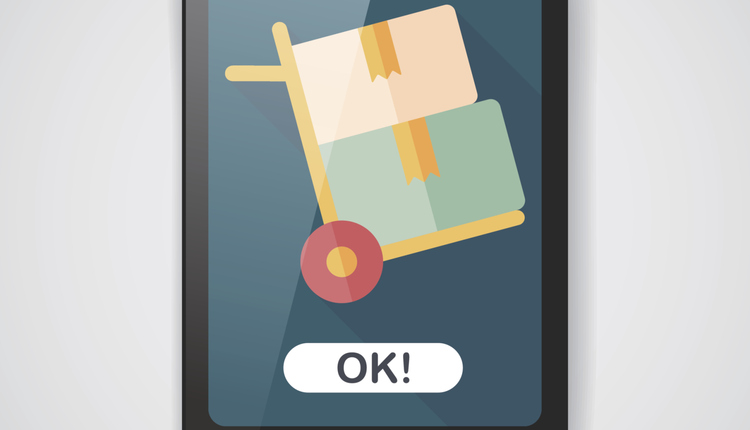The last generation of inserting systems for statement and transaction invoicing is upon us. Virtually everyone sending paper invoices from small private businesses to the giants of many industries are pressing their customers to "go green," eliminating paper mail and forcing reliance on electronic statements and databases that may or may not be up to supporting the people who choose them. This has been a slow process of change but it is inevitable not only because of technology but also because of the sheer cost of printing and mailing operations.
We as an industry of finishing systems manufacture, sales and service have done this to ourselves. Printing systems have changed with the times becoming faster, more versatile, more productive and potentially less costly. Finishing systems providers have not followed suit. The newest high throughput systems are faster but they are more expensive, much less flexible, harder to service, more expensive to service and have seemingly shorter lives as witnessed by the regular trade out of systems every four to five years as leases run out.
Thus, paper mail is increasingly expensive to finish although it is still desired by a majority of end users while electronic alternatives are increasingly less costly to implement. Our cost curves are going in the opposite directions, forcing change in the market place.
Those who still want to process paper mail must wake up and change their modus operandi. They must reduce operating costs so they can compete on a price per piece basis, providing 100% guaranteed mailing at a much more reasonable cost.
To me, this means acquiring systems that are much more versatile and able to handle multiple mailing applications with quick changeover, high up time, much lower service cost, fewer operators and technicians for support and long life. Finishing systems purchased now may have to last 25 years or more just like the gripper arm machines found in almost every lettershop worldwide. Knowing your capital and operating costs with current systems and making real calculations needed to properly evaluate new finishing alternatives. Two year paybacks and five year evaluation time frames are no longer sufficient. For print and mail to survive a longer term view must now be taken.
Dedicating systems to specific applications and leaving systems unused for three weeks out of a month also contributes heavily to a much more costly operating environment with senior managements looking at ways to outsource or eliminate the functions. Dedicated systems with only occasional use should be phased out if at all possible. This may mean putting more applications on a 20 day per month cycle. Where this is done, fewer systems and fewer but better trained and more proficient operators are required.
Verification systems have helped ensure 100% mailings but they have also slowed down production and added significant costs. More often than not they reduce finishing system productivity and overall operating productivity. Many finishing problems occur at the time of printing. Verification of print quality at the time of printing minimizes finishing problems and substantially reduces re-printing of jobs that cannot be finished because of print quality problems. Cooperation between printing and mailing is essential but not always normal. Internal walls have to come down for finishing operations to survive.
We as an industry of finishing systems manufacture, sales and service have done this to ourselves. Printing systems have changed with the times becoming faster, more versatile, more productive and potentially less costly. Finishing systems providers have not followed suit. The newest high throughput systems are faster but they are more expensive, much less flexible, harder to service, more expensive to service and have seemingly shorter lives as witnessed by the regular trade out of systems every four to five years as leases run out.
Thus, paper mail is increasingly expensive to finish although it is still desired by a majority of end users while electronic alternatives are increasingly less costly to implement. Our cost curves are going in the opposite directions, forcing change in the market place.
Those who still want to process paper mail must wake up and change their modus operandi. They must reduce operating costs so they can compete on a price per piece basis, providing 100% guaranteed mailing at a much more reasonable cost.
To me, this means acquiring systems that are much more versatile and able to handle multiple mailing applications with quick changeover, high up time, much lower service cost, fewer operators and technicians for support and long life. Finishing systems purchased now may have to last 25 years or more just like the gripper arm machines found in almost every lettershop worldwide. Knowing your capital and operating costs with current systems and making real calculations needed to properly evaluate new finishing alternatives. Two year paybacks and five year evaluation time frames are no longer sufficient. For print and mail to survive a longer term view must now be taken.
Dedicating systems to specific applications and leaving systems unused for three weeks out of a month also contributes heavily to a much more costly operating environment with senior managements looking at ways to outsource or eliminate the functions. Dedicated systems with only occasional use should be phased out if at all possible. This may mean putting more applications on a 20 day per month cycle. Where this is done, fewer systems and fewer but better trained and more proficient operators are required.
Verification systems have helped ensure 100% mailings but they have also slowed down production and added significant costs. More often than not they reduce finishing system productivity and overall operating productivity. Many finishing problems occur at the time of printing. Verification of print quality at the time of printing minimizes finishing problems and substantially reduces re-printing of jobs that cannot be finished because of print quality problems. Cooperation between printing and mailing is essential but not always normal. Internal walls have to come down for finishing operations to survive.







